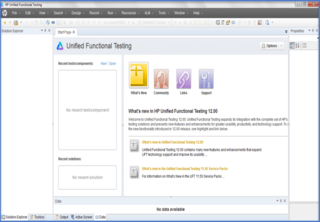
Lisp machines are general-purpose computers designed to efficiently run Lisp as their main software and programming language, usually via hardware support. They are an example of a high-level language computer architecture. In a sense, they were the first commercial single-user workstations. Despite being modest in number Lisp machines commercially pioneered many now-commonplace technologies, including effective garbage collection, laser printing, windowing systems, computer mice, high-resolution bit-mapped raster graphics, computer graphic rendering, and networking innovations such as Chaosnet. Several firms built and sold Lisp machines in the 1980s: Symbolics, Lisp Machines Incorporated, Texas Instruments, and Xerox. The operating systems were written in Lisp Machine Lisp, Interlisp (Xerox), and later partly in Common Lisp.
Symbolics, Inc., was a privately held American computer manufacturer that acquired the assets of the former company and continues to sell and maintain the Open Genera Lisp system and the Macsyma computer algebra system.
Jamie Werner Zawinski, commonly known as jwz, is an American computer programmer, blogger and impresario. He is best known for his role in the creation of Netscape Navigator, Netscape Mail, Lucid Emacs, Mozilla.org, and XScreenSaver. He is also the proprietor of DNA Lounge, a nightclub and live music venue in San Francisco.

Interleaf, Inc. was a company that created computer software products for the technical publishing creation and distribution process. Founded in 1981, its initial product was the first commercial document processor that integrated text and graphics editing, producing WYSIWYG output at near-typeset quality. It also had early products in the document management, electronic publishing, and Web publishing spaces. Interleaf's "Active Documents" functionality, integrated into its text and graphics editing products in the early 1990s, was the first to give document creators programmatic access to virtually all of the document's elements, structures, and software capabilities.

newLISP is a scripting language which is a dialect of the Lisp family of programming languages. It was designed and developed by Lutz Mueller. Because of its small resource requirements, newLISP is excellent for embedded systems applications. Most of the functions you will ever need are already built in. This includes networking functions, support for distributed and multicore processing, and Bayesian statistics. newLISP is free and open-source software released under the GNU General Public License, version 3 or later.
Open XML Paper Specification is an open specification for a page description language and a fixed-document format. Microsoft developed it as the XML Paper Specification (XPS). In June 2009, Ecma International adopted it as international standard ECMA-388.
Richard P. Gabriel is an American computer scientist known for his work in computing related to the programming language Lisp, and especially Common Lisp. His best known work was a 1990 essay "Lisp: Good News, Bad News, How to Win Big", which introduced the phrase Worse is Better, and his set of benchmarks for Lisp, termed Gabriel Benchmarks, published in 1985 as Performance and evaluation of Lisp systems. These became a standard way to benchmark Lisp implementations.
Lucid Incorporated was a Menlo Park, California-based computer software development company. Founded by Richard P. Gabriel in 1984, it went bankrupt in 1994.
Dylan programming language history first introduces the history with a continuous text. The second section gives a timeline overview of the history and present several milestones and watersheds. The third section presents quotations related to the history of the Dylan programming language.
Game Oriented Assembly Lisp is a programming language, a dialect of the language Lisp, made for video games developed by Andy Gavin and the Jak and Daxter team at the company Naughty Dog.
Cris Kobryn (1952) is an American systems engineer and software engineer best known for leading international teams of vendors and users in defining the Unified Modeling Language (UML) v1 and v2 standards for software engineering, as well as the Systems Modeling Language (SysML) v1 standard for systems engineering. He is the Founder and CTO of PivotPoint Technology Corp., a systems and software engineering services company that he founded in 2003.
LispWorks is computer software, a proprietary implementation and integrated development environment (IDE) for the programming language Common Lisp. LispWorks was developed by the UK software company Harlequin Ltd., and first published in 1989. Harlequin ultimately spun off its Lisp division as Xanalys Ltd., which took over management and rights to LispWorks. In January 2005, the Xanalys Lisp team formed LispWorks Ltd. to market, develop, and support the software.
Global Graphics PLC is known for its digital printing and document technology including the Harlequin and Jaws RIPs and the gDoc digital document software. The Company supplies its software under license to Original Equipment Manufacturers and software vendors who build products around it. Today it is primarily used in the Digital Front Ends of new generation digital and inkjet production presses and in desktop and mobile productivity software products. The Company has a large share of the photobook and newspaper markets. It is listed on the Euronext stock exchange in Brussels under the symbol GLOG.

OpenText UFT One, formerly known as Micro Focus Unified Functional Testing and QuickTest Professional (QTP), is software that provides functional and regression test automation for software applications and environments.

Clojure is a dynamic and functional dialect of the Lisp programming language on the Java platform.
Xanalys Limited is an independent software company founded in January 2009 when the Analytics and Investigative Management division of Tiburon Inc. was acquired by a group of former Xanalys management and engineering staff based in the UK. Various intellectual property and contracts relating to investigation and analysis software tools were acquired.
"Harlequin (software)" is a raster image processor first released in 1990 under the name ScriptWorks running as a command-line application to render PostScript language files under Unix. It was developed by Harlequin, a software company based in Cambridge, England.





